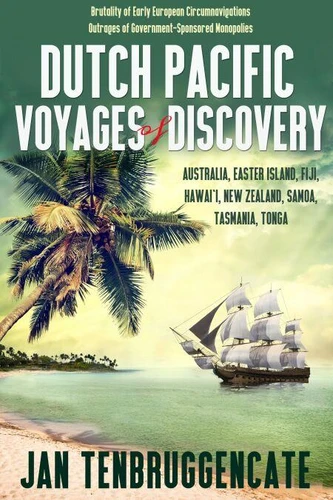Dutch Pacific Voyages of Discovery
Par :Formats :
Disponible dans votre compte client Decitre ou Furet du Nord dès validation de votre commande. Le format ePub est :
- Compatible avec une lecture sur My Vivlio (smartphone, tablette, ordinateur)
- Compatible avec une lecture sur liseuses Vivlio
- Pour les liseuses autres que Vivlio, vous devez utiliser le logiciel Adobe Digital Edition. Non compatible avec la lecture sur les liseuses Kindle, Remarkable et Sony
 , qui est-ce ?
, qui est-ce ?Notre partenaire de plateforme de lecture numérique où vous retrouverez l'ensemble de vos ebooks gratuitement
Pour en savoir plus sur nos ebooks, consultez notre aide en ligne ici
- FormatePub
- ISBN978-1-948660-04-4
- EAN9781948660044
- Date de parution18/05/2018
- Protection num.pas de protection
- Infos supplémentairesepub
- ÉditeurJan TenBruggencate
Résumé
Dutch voyagers from 1599 through the middle 1700s discovered many of the major island groups in the Pacific, including Australia, Easter Island, Fiji, Hawai`i, New Zealand, Samoa and Tonga. Three of those expeditions went east to west around Cape Horn and were led by independent adventurers who challenged the monopoly of the Dutch East India Company, in hopes of finding an alternate route to lucrative spice trading ports.
Some also acted as pirates or privateers, attacking Spanish and Portuguese interests in the New World. They were brutal trips in the way the voyagers treated those they met, but also in the way in which they were treated. Many sailors died of scurvy and other illness and many others by violent acts. Most sailors on these expeditions did not survive to see Holland again. Ships were lost at sea, through shipwreck or through confiscation by the Dutch East India Company when they reached their goals.
Many voyages made later with the permission of the monopoly explored Pacific islands from the west to the east. This volume reviews in detail the actual voyages as well as the political and economic issues that surrounded them in the Netherlands.
Some also acted as pirates or privateers, attacking Spanish and Portuguese interests in the New World. They were brutal trips in the way the voyagers treated those they met, but also in the way in which they were treated. Many sailors died of scurvy and other illness and many others by violent acts. Most sailors on these expeditions did not survive to see Holland again. Ships were lost at sea, through shipwreck or through confiscation by the Dutch East India Company when they reached their goals.
Many voyages made later with the permission of the monopoly explored Pacific islands from the west to the east. This volume reviews in detail the actual voyages as well as the political and economic issues that surrounded them in the Netherlands.
Dutch voyagers from 1599 through the middle 1700s discovered many of the major island groups in the Pacific, including Australia, Easter Island, Fiji, Hawai`i, New Zealand, Samoa and Tonga. Three of those expeditions went east to west around Cape Horn and were led by independent adventurers who challenged the monopoly of the Dutch East India Company, in hopes of finding an alternate route to lucrative spice trading ports.
Some also acted as pirates or privateers, attacking Spanish and Portuguese interests in the New World. They were brutal trips in the way the voyagers treated those they met, but also in the way in which they were treated. Many sailors died of scurvy and other illness and many others by violent acts. Most sailors on these expeditions did not survive to see Holland again. Ships were lost at sea, through shipwreck or through confiscation by the Dutch East India Company when they reached their goals.
Many voyages made later with the permission of the monopoly explored Pacific islands from the west to the east. This volume reviews in detail the actual voyages as well as the political and economic issues that surrounded them in the Netherlands.
Some also acted as pirates or privateers, attacking Spanish and Portuguese interests in the New World. They were brutal trips in the way the voyagers treated those they met, but also in the way in which they were treated. Many sailors died of scurvy and other illness and many others by violent acts. Most sailors on these expeditions did not survive to see Holland again. Ships were lost at sea, through shipwreck or through confiscation by the Dutch East India Company when they reached their goals.
Many voyages made later with the permission of the monopoly explored Pacific islands from the west to the east. This volume reviews in detail the actual voyages as well as the political and economic issues that surrounded them in the Netherlands.




